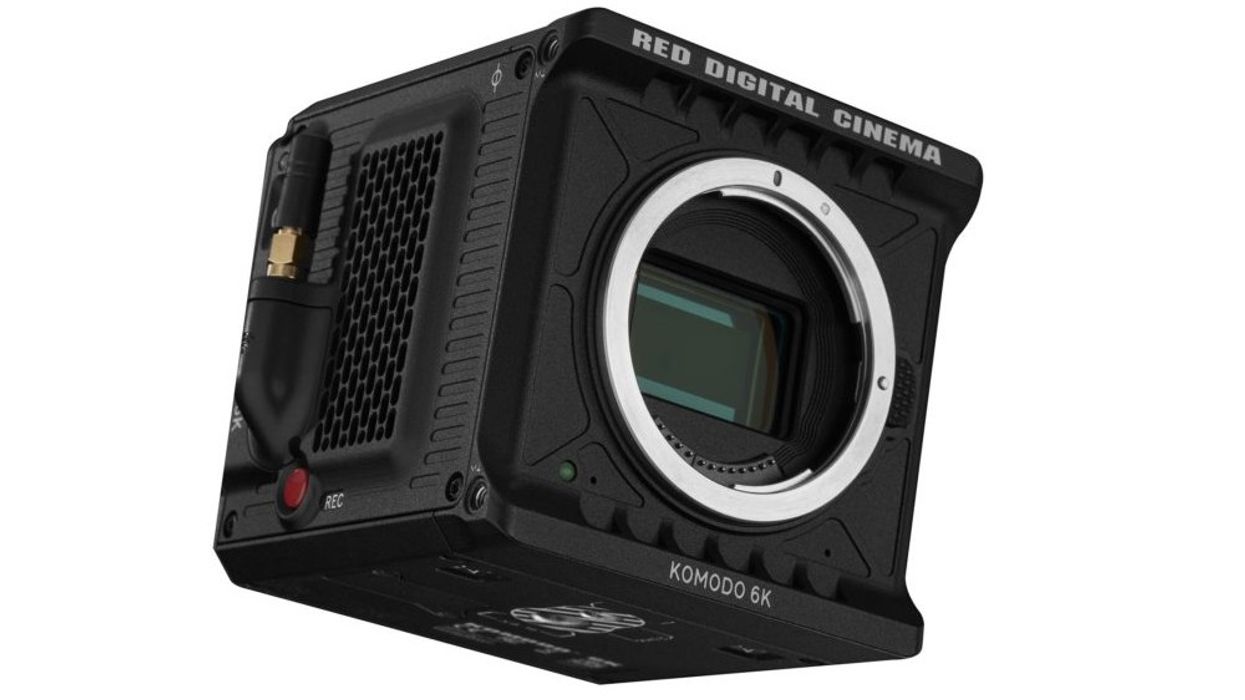Here's Why Autofocus for RF Lenses Isn't Available on RED Komodo Yet
At least not without an EF to RF adapter.

RED's 6K Super 35 Komodo officially landed last week, and as interesting as the camera is spec-wise, one feature that owners are waiting on is the phase detection autofocus (PDAF) for its native RF mount.
RED teased the tech during its development, and as we write this, PDAF is currently only working with the EF mount protocol. That said, RED is shipping Komodo with a Canon EF-EOS R adapter so that filmmakers can at least take advantage of its electronic communication with EF lenses.
What is Phase Detection Autofocus?
As the name suggests, phase detection autofocus is a focusing assist tool.
Here's a simple way to understand how it works. Imagine light passing through a camera and hitting the sensor. That sensor has focusing sensors that split the light into two different angles. When the operator triggers autofocus, the motor aligns those two angles to the same position, and as a result, the image is in phase (in focus).
With DSLRs, it uses a similar concept, but instead of the focusing points being directly on the sensor, like with mirrorless cameras, it uses a mirror behind the sensor to achieve the results.
For video, PDAF is generally better, faster, and more accurate than another form of autofocus called contrast detection, which can be found on Panasonic cameras. However, contrast detection can focus on any part of the image, not just where the focusing points exist on the sensor.
Companies like Canon use Dual Pixel Autofocus, a form of PDAF for its mirrorless cameras, and part of what they want you to know about it is the number of focusing points that exist and how much of the sensor is covered. For example, the R5 has 5,940 AF points for photography and 4,500 AF points in video mode. The greater number of points spread across the sensor, the better.
Others like Sony, Nikon, and Fujifilm use a hybrid autofocus system for its mirrorless cameras which blends PDAF and contrast-detection into one system. It's like getting the best of both worlds in one. But as you'd imagine, they're all not created equally.
RED KOMODO 6K Camera

- 6K 19.9 MP S35 global shutter CMOS sensor
- 16+ stops of dynamic range
- Built-in Canon RF mount
- Power: DC IN power port, two Canon BP style batteries
Komodo's PDAF
Before Komodo, RED DSMC2 cameras used contrast detection for autofocus. That's why it was exciting when RED revealed they were working on a version of PDAF. While the majority of cinema shooters don't rely on autofocus, we're starting to see really good autofocus systems appear on dedicated cinema cameras from Sony and Canon.
So why doesn't the PDAF work with RF lenses at release?
In an interview with Film & Digital Times, Jarred Land expanded on the development, saying, they were working on the phase-detection autofocus for a little more than a year and first started developing it for EF lenses. Land also admits that theirs "is not rock star autofocus," and he doesn't "want anybody to buy this camera thinking it’s an autofocus consumer camera, because it’s not."
In practice, the autofocus will be slower than competitors', as it's aimed toward filmmakers who "don't want crazy fast focus shifts."
Even so, we speculate that RED would develop its PDAF to allow for different speed adjustments similar to Sony's FX9 autofocus. Right now, if you're someone hoping that Komodo's autofocus is going to save you from being terrible at rack focusing, it's not. At least not for now.
Land also said support for RF lenses is simply a matter of turning on the protocol. From what we know, Canon doesn't release the protocol to third parties, and instead, companies have to reverse engineer the mount to take advantage of the autofocus. The RF protocol is harder to do that with than the EF mount.
So when could Komodo users expect PDAF for RF lenses? Your guess is as good as ours, but we suggest keeping an eye out for when Sigma releases its RF lenses. Komodo might follow suit then.
Do you own a Komodo? Any thoughts on autofocus or image performance? Let us know in the comments below.

 No Film School's coverage of
No Film School's coverage of 









